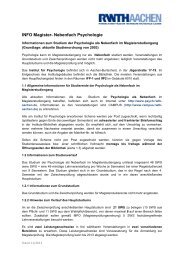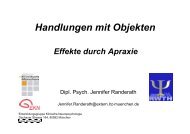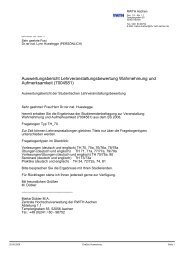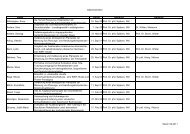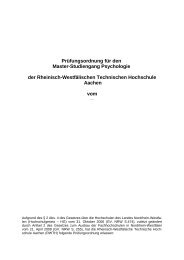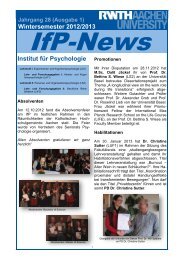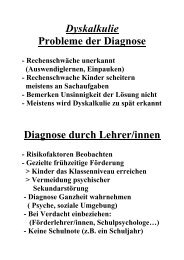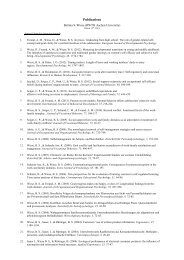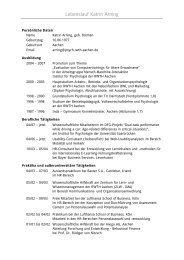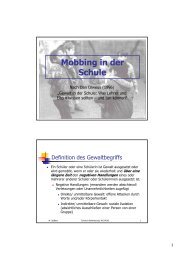Crossmodal Action 1 Crossmodal Action Selection - RWTH Aachen ...
Crossmodal Action 1 Crossmodal Action Selection - RWTH Aachen ...
Crossmodal Action 1 Crossmodal Action Selection - RWTH Aachen ...
Create successful ePaper yourself
Turn your PDF publications into a flip-book with our unique Google optimized e-Paper software.
<strong>Crossmodal</strong> <strong>Action</strong> 14<br />
In line with this reasoning, the notion of single-task processing speed difference as a<br />
determinant of dual-task cost asymmetry (Posner & Snyder, 1975) can also safely be rejected<br />
(see also Dunbar & MacLeod, 1984). Finally, it is important to note that the amount of dualtask<br />
costs for the manual task is in the range of the whole RTs in the saccade task, and thus<br />
cannot be explained as being caused solely by a postponement in the order of one single stage<br />
of saccade processing.<br />
A closer look at the RT data allows for a more in-depth evaluation of several possible<br />
predictions of the serial bottleneck model. In the dual-task condition of the small temporal<br />
overlap group, saccades are usually processed first, whereas the manual responses are selected<br />
afterwards, given the substantial single-task RT advantage of 375 ms for the saccades and the<br />
finding that saccades were executed first in 99% of the trials. If we assume that this overall<br />
processing sequence mainly remains unchanged also in the large overlap group (given that<br />
saccades were still executed first in over 90% of the trials), the bottleneck model would<br />
predict a strong increase of manual RTs resulting from the increased overlap of response<br />
selection stages. However, if we assume that in the large temporal task overlap group manual<br />
responses are executed first in at least a portion of trials, this should be reflected in an<br />
increase of dual-task costs for the saccades. However, since we did neither observe a<br />
substantial effect of temporal task overlap on manual costs, nor on saccade costs, but instead<br />
even a decrease of errors in the large temporal task overlap group, both predictions derived<br />
from the bottleneck model were not supported by our data.<br />
On a more general level, one might question whether the compatibility manipulation<br />
in the present study affects response selection in the same way as compatibility usually affects<br />
response selection in the PRP paradigm. The major characteristic of the present study is that<br />
subjects made two responses to the same spatial attribute of a single stimulus. Previous<br />
studies provided evidence for the applicability of the traditional response selection bottleneck<br />
model under these conditions (e.g., Fagot & Pashler, 1992), and one may speculate that the



